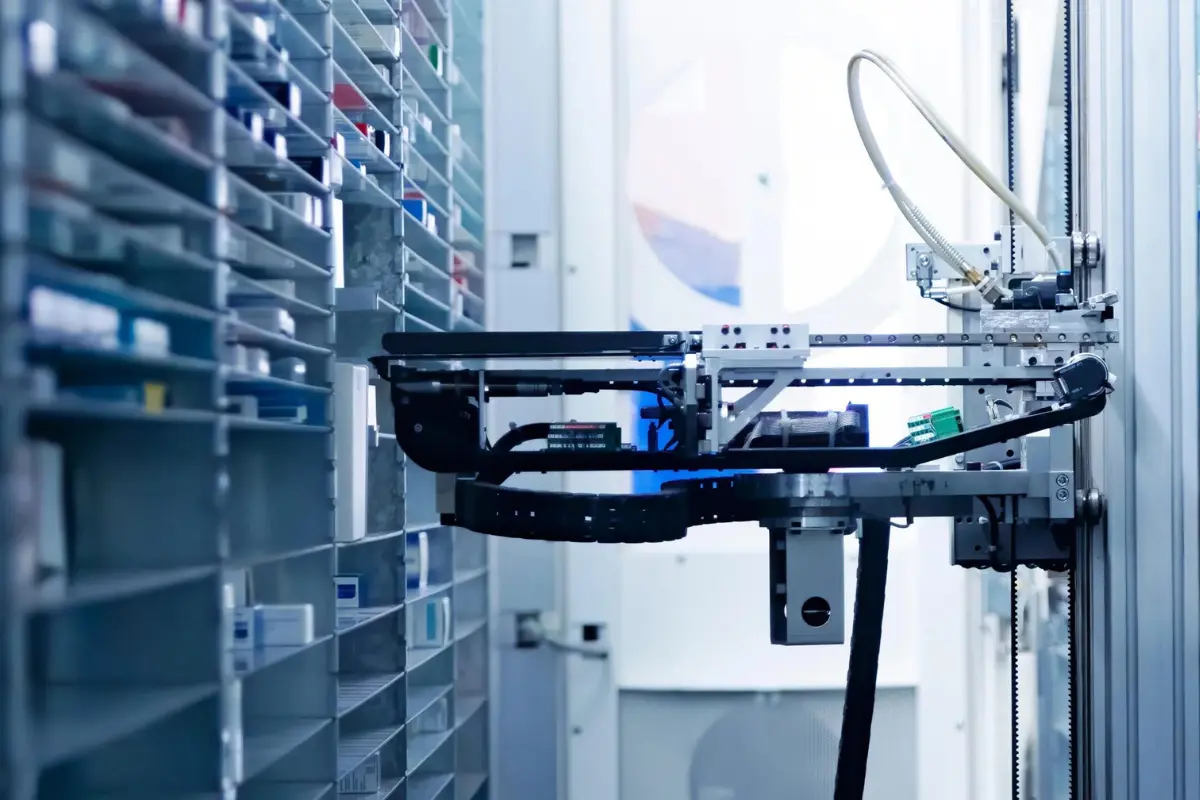A quality automated medication dispensing system should have the following features:
- Accurate Dispensing: The system should dispense the correct medication, in the right dosage, at the proper time.
- Barcode Scanning: The system should use barcode scanning technology to ensure that the proper medication is dispensed to the right patient.
- Safety Checks: The system should have safety checks in place to prevent medication errors, such as checking for drug interactions, allergies, and medication duplications.
- User-Friendly Interface: The system should have a user-friendly interface that is easy for healthcare professionals and patients.
- Customizable Settings: The system should allow for settings based on individual patient needs, such as medication schedules, dosages, and frequency.
- Data Tracking: The system should track data on medication dispensing, including the date and time of dispensing, medication usage, and patient adherence.
- Alarm System: The system should have an alarm system to alert patients and healthcare professionals when it is time for the medication to be dispensed.
- Connectivity: The system should be able to connect to other healthcare technologies, such as electronic health records and pharmacy management systems.
- Reliable Performance: The system should be reliable and have minimal downtime to ensure patients receive their medications on time.
- Secure: The system should have secure access controls to prevent unauthorized access to medication and patient information.
Automated medication dispensing systems: an overview
An automated medication dispensing system (AMDS) is a computer-aided medication management system designed to administer medication to patients in a hospital or other healthcare setting. The primary purpose of an AMDS is to improve patient safety by reducing the risk of medication errors.
Many types of AMDSs are available on the market, but all systems share some standard features. These features include:
The database is designed to hold information specific to each patient’s medications, including the type of medication, the prescribed dosage, and the frequency at which the medication is taken.
A barcode scanner: This is used to scan the barcodes on the medication bottles or packages to identify the patient and the medication.
A medication dispensing unit: This is the actual device that dispenses the medication to the patient. The medication is typically dispensed in a pre-filled, single-use blister pack.
A control panel: This is used by the healthcare provider to input information about the patient and the medication.
An interface with the hospital’s electronic medical record (EMR) system: This allows the AMDS to automatically retrieve information about the patient’s medications from the EMR.
There are many different manufacturers of AMDSs, and each system has its own unique features. However, all AMDSs share the same basic goal: to improve patient safety by reducing the risk of medication errors.
The features of a quality automated medication dispensing system
An automated medication dispensing system is a type of computer-driven machinery that is commonly used in healthcare settings to measure, mix and dispense prescribed medications. This type of system can be very beneficial in terms of efficiency and accuracy, but only if it is of high quality. Here are some of the key features that a quality automated medication dispensing system should have:
Accurate dosing
One of the most important features of an automated medication dispensing system is accuracy. The design should be able to dispense the correct amount of medication in the proper strength and dosage form every time.
Efficient
An automated medication dispensing system should be able to dispense medications quickly and efficiently. This can help to save time, especially in a busy healthcare setting.
User-friendly
The system should be easy to use so that even those with limited computer experience can use it without any problems.
Secure
The system must be secure to ensure that medication dispensation is limited to authorized individuals only.
Reliable
To ensure accurate and efficient medication dispensing every time, the system must be reliable and dependable.
The benefits of using an automated medication dispensing system
The benefits of using an automated medication dispensing system are many and varied. Perhaps the most obvious benefit is the increased accuracy and efficiency that comes with automating the process of dispensing medication. With an automated system in place, there is no need for a pharmacy technician to manually fill prescriptions or count pills. This not only saves time but also reduces the chances of human error.
Another benefit of using an automated medication dispensing system is the increased level of security that it can provide. With an automated system in place, it is much more difficult for someone to gain access to medications that they should not have access to. This is especially important in settings such as hospitals where there is a more tremendous potential for drug diversion.
Finally, automated medication dispensing systems can also help to reduce costs. By automating the process of dispensing medication, pharmacies can save on labor costs. In addition, automated systems can help to reduce waste, as they are often able to dispense smaller quantities of medication more accurately than manual systems.
The challenges of using an automated medication dispensing system
An automated medication dispensing system can be a great asset to any healthcare facility. It can help to improve patient safety and medication compliance, and can also help to free up nurses’ time so that they can focus on other tasks. However, there are also some challenges that can come with using an automated system. Here are the four main challenges:
1. Initial set-up and implementation costs
One of the challenges of using an automated medication dispensing system can be the initial set-up and implementation costs. Qualified staff will need to purchase, install, and set up the system. There may also be training costs associated with getting staff up to speed on how to use the system. However, in the long run, an automated system can help to save money by reducing medication errors and improving patient safety.
2. Maintenance costs
Another challenge of using an automated medication dispensing system can be the ongoing maintenance costs. Regular service and maintenance are necessary to keep the automated system operating smoothly. This can include things like replacing parts, updating software, and providing staff training. Despite the costs associated with implementing an automated system. The savings generated by reducing medication errors and enhancing patient safety can more than justify the investment.
3. Staff training and buy-in
An automated medication dispensing system can represent a significant change for staff. Making it essential to ensure that they receive proper training on how to use the system. There may also be a need for some staff members to change the way that they work in order to make full use of the system. For instance, in order to ensure the correct dispensation of medications, nurses may need to begin entering patient data into the system. Although this may pose a challenge, it is crucial to gain staff buy-in to ensure that the system is utilized correctly and efficiently.
4. System reliability
It is important to make sure that an automated medication dispensing system is reliable. This means that it should be able to dispense the correct medications at the correct times and that it should have built-in safeguards to prevent medication errors. There should also be a process in place for dealing with
Read Also: How Do You Test For Chickenpox?




